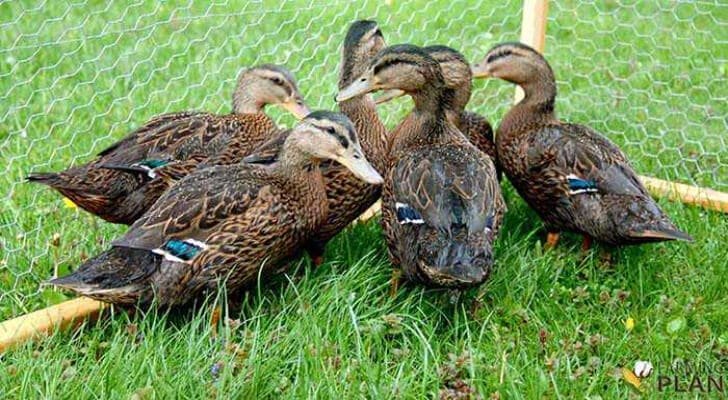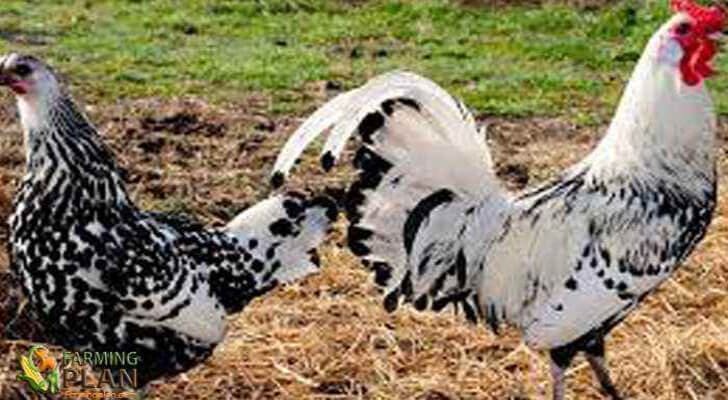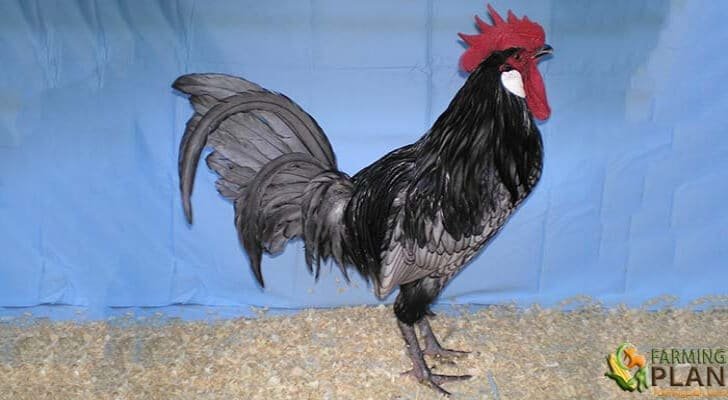The Rouen Duck originated in the French region of Rouen, in 1923 an expert breeder named Garry sought to improve his volume by crossing it with Culverts, achieving the current standard of the breed.
Its region of origin is the Bourbonnais and its ancestor is probably the English duck of Aylesbury breed, but its position is less horizontal. It is a duck of good size, (the duck: 4 kg, the foot 3.5 kg), good mass, chubby, but with a lively and lively air, white plumage without spots or sulfur reflections. Fast growth; The female duck begins to put early, the eggs are 80 g, white shell.

Characteristics of Rouen Duck
The male Rouen Duck has a head with a lustrous green plumage, his neck, the same color, has a white-collar at the bottom, the beak is greenish-yellow. The feathers of the wings are black and brown, with pale gray covers. The Lateral has a characteristic blue ribbon. The tail is gray coffee, its legs and fingers are orange, its thighs gray.
The female has dark brown plumage with two reddish-brown bands on each side. Its beak is orange with dark blue on top. Its neck is golden brown. The brown wings, with blue-green visions, have a white band at the ends. Its tail is golden brown, its legs and fingers are orange. The male reaches a weight of 4kg While the female weighs 3.6 kg on average. The Rouen duck, along with the Pekin duck and Muscovy duck, is the most sought after for meat production.
Existent Varieties
Rouen Clear
This Rouen duck is raised from immemorial times in the Rouen region and is a Colvert duck improved by selection in order to increase its volume. Thus 3.5 kg subjects were obtained. It is selected to be operated in the last thirty years of the 19th century. However, in 1910, it was supplanted by other races.
It is then that a breeder named Garry undertook his regeneration in order to improve his volume; From 1910 to 1920, crossing it with Culverts and other ducks of passage obtained subjects of 4.5 kg. It can be considered that Garry is the creator of the Rouen duck adopted by the 1923 standard. The clear Rouen, whose meat is very tasty, is one of our best performance ducks. The female duck lays eggs of at least 80g, whose shell is a very clear greenish color.
Rouen Dark
The English breeders selected the dark Rouen, starting from the clear Rouen, obtaining a very different animal, much less elegant type, and darker colors. It moves with more difficulty and more slowly, the fertilization is quite laborious. The paw puts very little. Eggs of minimum 80g, with a greenish shell that is sometimes clearer (blancuscas) or darker (bluish). The duck weighs 3.5 kg. And the female duck weighs 3 kg.
In each category of volatile, France possesses a race unanimously recognized abroad, for the hens is the Bresse, for the geese is the one of Toulouse and for the ducks is the one of Rouen. Most of the amateur breeders of the Rouen duck of foreign countries select the dark Rouen; The clear French variety has only recently been recognized abroad.
Food
The Rouen dark comes to eat herbs and aquatic animals from ponds that have waters that are not so deep. Being a large breed breeder should be careful with their food so that the ducks are not obese, as their weight falls directly on the legs and can cause lameness.
Usage
At the scientific level, this type of cross is used to be able to observe at the phenotypic and genotypic level of the ducks, of which they can be compatible and to be able to obtain new races or species of them. Their crosses could help the species of ducks to improve their genes in terms of their climate resistance, taking into account their level of production. Some ducks are known to be the main food dishes in some countries of which may have been some ducks already crossed.
These crosses also allow us to extend the quality of life of the future generations of these species since at the gastronomic level the consumption is greater. And research from different branches in biological science ducks is used for such experiments. This type of breed helps the production of ducks as their breed is widely used for crossing other breeds.
Duck Profile
| Duck Name | Rouen Duck |
| Other Name | None |
| Duck Purpose | Meat |
| Feather color | Wild, held wild, wild blue, wild blue |
| Weight | 3.4 to 4 kg |
| Egg Color | White and green. |
| Egg Size | Large |
| Egg Weight | Up to 80 grams |
| Egg Productivity | 50 eggs in the year |
| Country of Origin | France |
FAQ
Can a Rouen duck fly?
No, Rouen ducks are unable to fly. This is because they are a domesticated breed of duck and have been selectively bred for their large size and meat production. As a result, they have been bred to be heavier than other breeds of ducks, making them too heavy to take off from the ground.
Will Rouen ducks lay eggs?
Yes, Rouen ducks will lay eggs. These ducks are a popular choice for egg production due to their large size and relatively high egg production rate compared to other breeds. The average Rouen duck will lay around 175-200 eggs per year, and the eggs are larger than those of most other duck breeds. Rouen ducks tend to be fairly good mothers, so they can often be left to hatch their own eggs without much intervention from an owner.
Are Rouen ducks rare?
Rouen ducks are not considered rare, but they are not as common as some other breeds of domestic duck. They are a large breed of duck, which means that they require more space and resources than other breeds. This can make them harder to find in some areas.
Do Rouen ducks lay blue eggs?
Rouen ducks are a breed of domesticated duck originating in France, and they lay white eggs. While some breeds of duck do lay blue eggs, such as the Swedish Blue and the Cream Crested Legbar, the Rouen is not one of them.
Conclusion
The Rouen Duck, which originated in the French region of Rouen, was developed by an expert breeder named Garry. In 1923 he sought to improve his volume by crossing it with Culverts and achieved the current standard for this breed. The male Rouen Duck has a lustrous green plumage on its head, neck and breast that have white collars at their bottom. Its beak is also greenish yellow while its wings are black and brown with pale gray covers along with them. This guide should help you understand more about what makes up this distinctive type of duck!
As A Reference: Wikipedia


